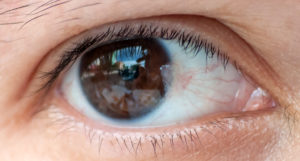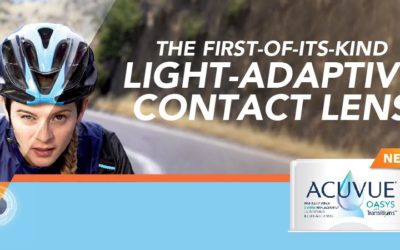How to prevent sun damage to your eyes

Our tips for keeping your eyes protected this summer
With summer upon us, Kiwis are heading outdoors, firing up the BBQ and enjoying the sunny weather. But as the days are getting longer and sun stronger, it’s important to check in with our eye health and make sure we’re giving our eyes the best protection from the sun’s rays.
As we all know, the sun in New Zealand can be particularly harsh.
Because we can’t see UV rays, it’s easy to forget the impact they have on our eyes. Even on a cloudy day, UV can damage our skin and eyes.
Protecting our skin from UV rays is second nature but many forget to protect our eyes as well. To help you and your family stay safe this summer, we’ve put together our top tips for preventing sun damage to your eyes.
What damaging effects does the sun have on our eyes?
 While a sunburn is pretty easy to spot on our skin, sun damage to your eyes can be harder to identify.
While a sunburn is pretty easy to spot on our skin, sun damage to your eyes can be harder to identify.
This doesn’t mean UV rays are any less damaging to our eyes. The damage from UV rays builds up over our lifetime, meaning it can have a long-term and permanent effect on our eye health.
Did you know? UV rays are usually strongest between 10 am and 4 pm, with the spring and summer months being the strongest.
Common eye problems caused by the sun
- Short-term damage to the eyes is likened to sunburn. This photokeratitis and photoconjunctivitis cause the front surface of the eye, including the cornea and conjunctiva to become inflamed. This can be painful, causing you to experience blurred vision, swelling in the eyes, redness, watery eyes and the need to blink lots. While often resolved in a couple days, the condition can be avoided by wearing appropriate sunglasses especially in high light environments such as in the snow or around the water.
 Pterygium (pronounced “ter-ri-gi-um”) is a benign growth of tissue on the surface of the eye. This growth is often triangular in shape and, if left untreated, can extend across the pupil obscuring vision, or causing the surface of the eye to alter shape, resulting in blurred vision. Exposure to excessive amounts of UV light is thought to be the most significant cause of pterygia. Accumulated exposure through childhood and teenage years will often show up in later adulthood with symptoms such as redness, irritation and a thickened appearance of the pterygium usually on the inside corner of the eye.
Pterygium (pronounced “ter-ri-gi-um”) is a benign growth of tissue on the surface of the eye. This growth is often triangular in shape and, if left untreated, can extend across the pupil obscuring vision, or causing the surface of the eye to alter shape, resulting in blurred vision. Exposure to excessive amounts of UV light is thought to be the most significant cause of pterygia. Accumulated exposure through childhood and teenage years will often show up in later adulthood with symptoms such as redness, irritation and a thickened appearance of the pterygium usually on the inside corner of the eye.
- Cataracts. The exact cause of age related cataracts is unclear but it is thought that exposure to UV rays is one of the factors involved in their development. Cataracts are characterised as a clouding in the lens of the eye, which affects vision. While many people develop cataracts as they age, long-term exposure to UV may cause cataracts to develop faster.
- Macula degeneration
 is an eye disease that leads to a loss of vision over time, causing blurring and loss of ability to see fine detail. Increasing age is the greatest risk factor and some people are genetically pre-disposed to developing MD. We know that smoking increases your risk and that eating a healthy diet and exercise are protective. Some studies also suggest that long-term exposure to UV radiation is associated with macula degeneration. Regularly wearing sunglasses is a great way to limit this long-term exposure.
is an eye disease that leads to a loss of vision over time, causing blurring and loss of ability to see fine detail. Increasing age is the greatest risk factor and some people are genetically pre-disposed to developing MD. We know that smoking increases your risk and that eating a healthy diet and exercise are protective. Some studies also suggest that long-term exposure to UV radiation is associated with macula degeneration. Regularly wearing sunglasses is a great way to limit this long-term exposure.
Quick tip: the Sunsmart website provides a helpful online tool to find daily Sun Protection Alerts for your city.
How to protect your eyes from sun damage
The symptoms of eye damage aren’t always evident straight away. Often, the impacts are seen later on in life.
This is why it’s crucial that we give our eyes the protection they need early on.
Protecting our eyes needn’t be complicated. Just like putting on sunscreen, we can all teach ourselves and our families everyday habits to look after our eyes:
 Check out our range of Ugly Fish Unbreakable Junior polarised sunglasses. They provide great protection for young eyes with styles to suit girls and boys from one to eleven years.
Check out our range of Ugly Fish Unbreakable Junior polarised sunglasses. They provide great protection for young eyes with styles to suit girls and boys from one to eleven years.
At $49.95 these provide serious value for money and they are seriously unbreakable with an unconditional lifetime warranty!
Avoid looking directly at the sun
While it may seem like a no-brainer, it’s always important to remember not to look directly at the sun. Most adults will be aware of this, but it’s important that we teach children this practice too.
Even on a cloudy day when the sun appears less intense, the sun’s UV rays can still have a damaging effect so keep this in mind whenever you’re out and about.
Wear sunglasses
Just like putting on sunscreen, you should always wear sunglasses to protect your eyes from UV damage.
When choosing sunglasses, there are a few key things to keep in mind:
- 100% UV protection. This is the most important thing to look for when buying sunglasses. Always check for the UV400 rating when selecting sunglasses.
- The right coverage. To get further protection, consider choosing larger sunglasses that offer wider protection or wrap around styles. This can help block UV rays reaching from the corner of our eyes.
- Polarized doesn’t mean UV protection. Polarised sunglasses are great for reducing glare from horizontal surfaces like water, but this shouldn’t be confused with UV protection. If you like your sunglasses polarised, make sure they also offer UV protection as well!
 At Greenlane Penrose Optometrist, we hand select the best sunglasses, with a wide range of styles available, from the designer to the everyday practical. All of our sunglasses can be fit with prescription lenses and our team are always here to help find the best pair for you.
At Greenlane Penrose Optometrist, we hand select the best sunglasses, with a wide range of styles available, from the designer to the everyday practical. All of our sunglasses can be fit with prescription lenses and our team are always here to help find the best pair for you.
Choose from Calvin Klein, Anne Klein, Bebe, Nike, Nautica, Longchamp, Rayban and Adidas.
Prescription Sunglass frame and lens packages complete from $299.
As always, we recommend coming in for regular eye exams so we can check in with your eye health and pick up on any UV-related damage early on.
If you’re looking for some new sunglasses or would like to check in with your eye health, phone us on 5251516 to book an appointment.
Featured Posts
The latest technology in contact lenses
We trialed the brand new Acuvue Oasys’ with transitions contact lenses to see if they stand up to the test Transition glasses have been around for a while, offering an easy switch between brightness levels with the lens’s adaptation...
What you should know about macular degeneration
Being New Zealand’s leading cause of blindness, macular degeneration is a painless progression of vision loss. As an age-related eye disease, it’s most common for those over the age of 50. Like many eyesight problems, caring for your...
Address
Cnr Great South Road & Rockfield Road, Greenlane 1051
Phone
09 525 1516
Hours
Mon to Fri: 9am – 5pm
Sat to Sun: Closed
Holidays: Closed


